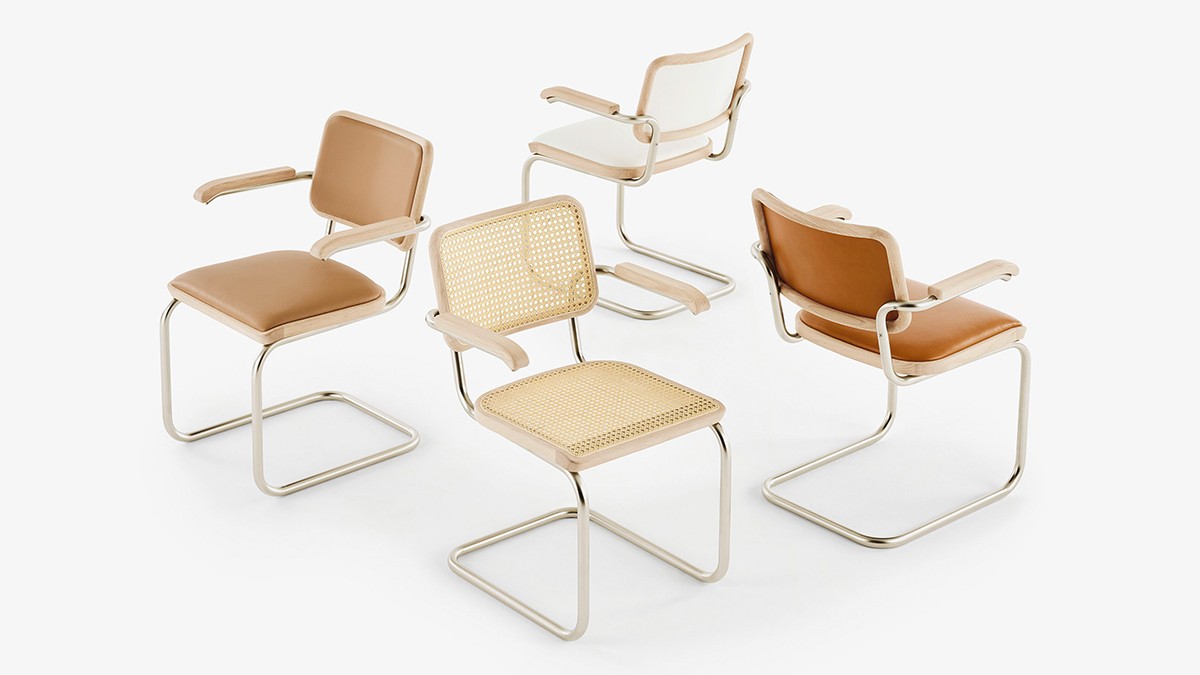Wood as a poetic material
Modern material combinations
Wood in combination with tubular steel is one of the material combinations that made the Bauhaus designs world-famous. In the modern era, tubular steel stood for progress and industrialisation, while wood was a classic material from the carpentry trade.
At the beginning of this year, a new edition of selected Thonet classics was released, in which this combination of materials was sensitively reinterpreted by none other than German fashion designer Jil Sander. The characteristic shapes of Marcel Breuer's S 64 cantilever chair have been retained. The tubular steel - a classic in furniture design since the Bauhaus - is carefully combined with elements made of white-pigmented oak. These wooden elements - gently adapted to the curves of the tube - mark the points at which the chair meets the body. The oak wood thus functions as a material of transition, as a haptic interface between human and object.
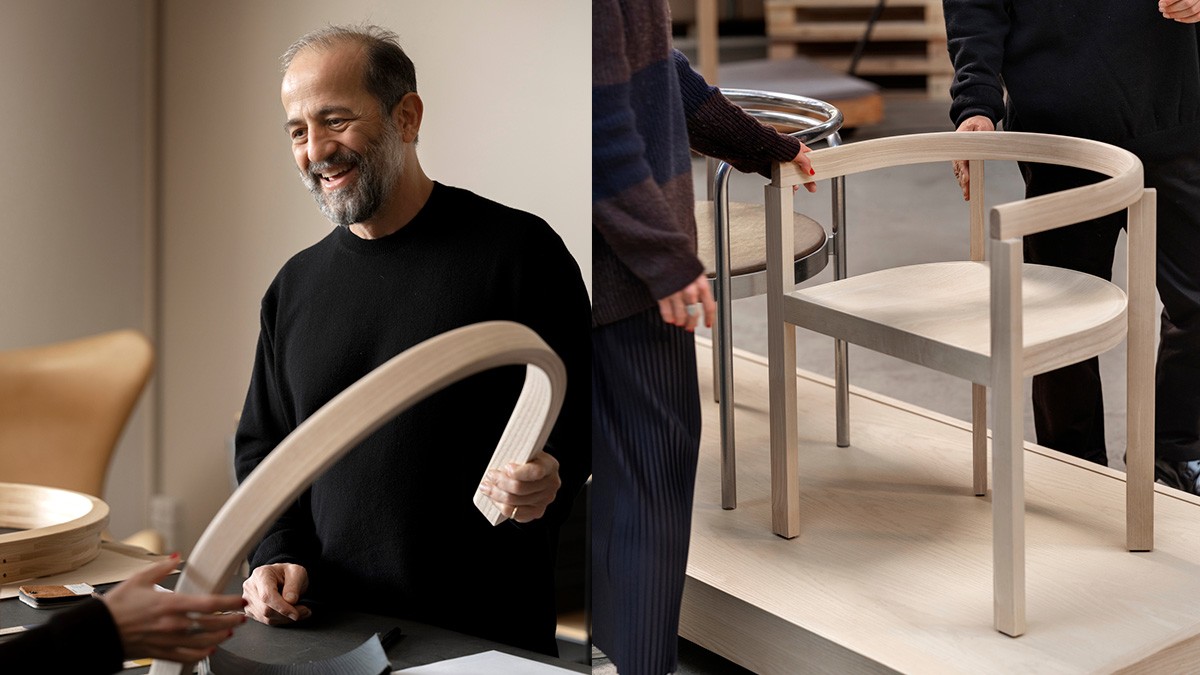
Insights into the design process of ‘After’. Photos: Fritz Hansen
Classic shapes with a twist
The Danish manufacturer Fritz Hansen, whose origins, like Thonet, also lie in joinery, relies on proven techniques and the reduction of classic forms in its latest series. For ‘After’, designer Michael Anastassiades has combined the curves of the designs with the rigour of square wood. The connections between the mouldings are thus not concealed but placed as a contrasting design highlight.
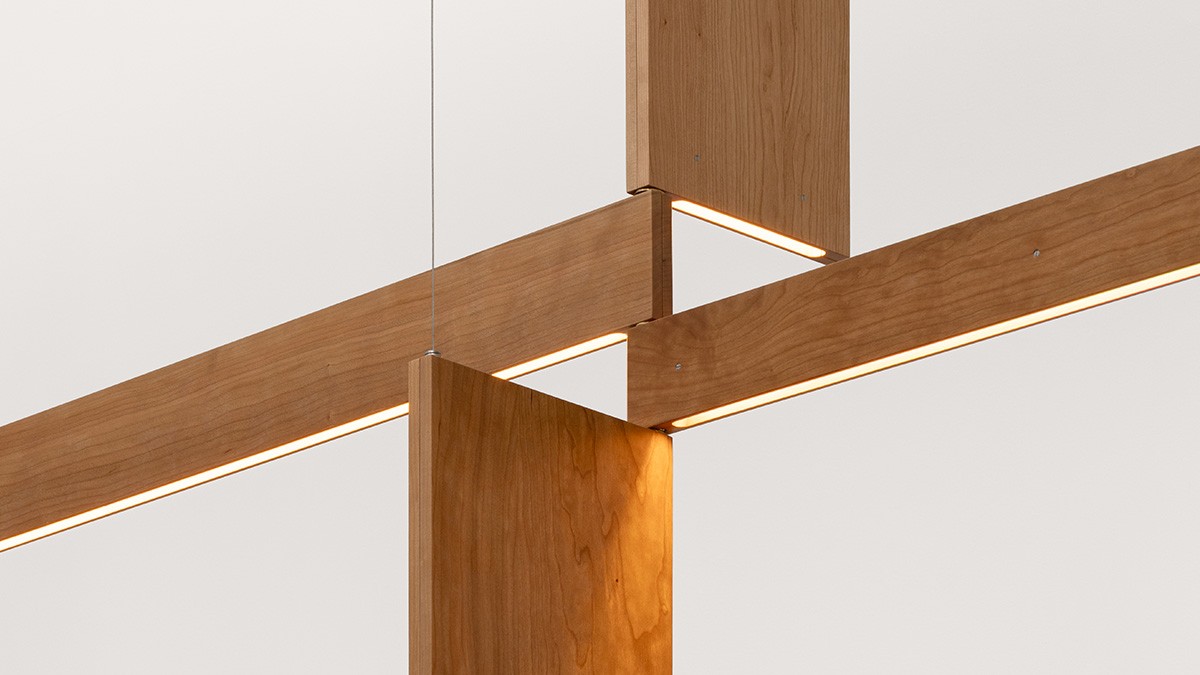
Radically clear: the ‘Chandelier’ from the ‘Formation’ series (2024) by Formafantasma. Credit: Courtesy Friedman Benda and Formafantasma. Photos: Marco Cappelletti
Sculptural rigour
This design is even more austere: the ‘Chandelier’, created by the design studio Formafantasma in collaboration with the Friedman Benda Gallery, has an almost clinical yet sculptural appearance. It is part of the ‘Formation’ series: a series of limited wooden objects that stand out due to their static presence and graphic design language and quote current design trends in their radical clarity. Their cool rigour is only broken up by the material used - warm-toned cherry wood - which lends them a quiet sensuality. ‘Formation’ explores archetypes of furniture design and operates at the interface between conceptual art and luxury objects.
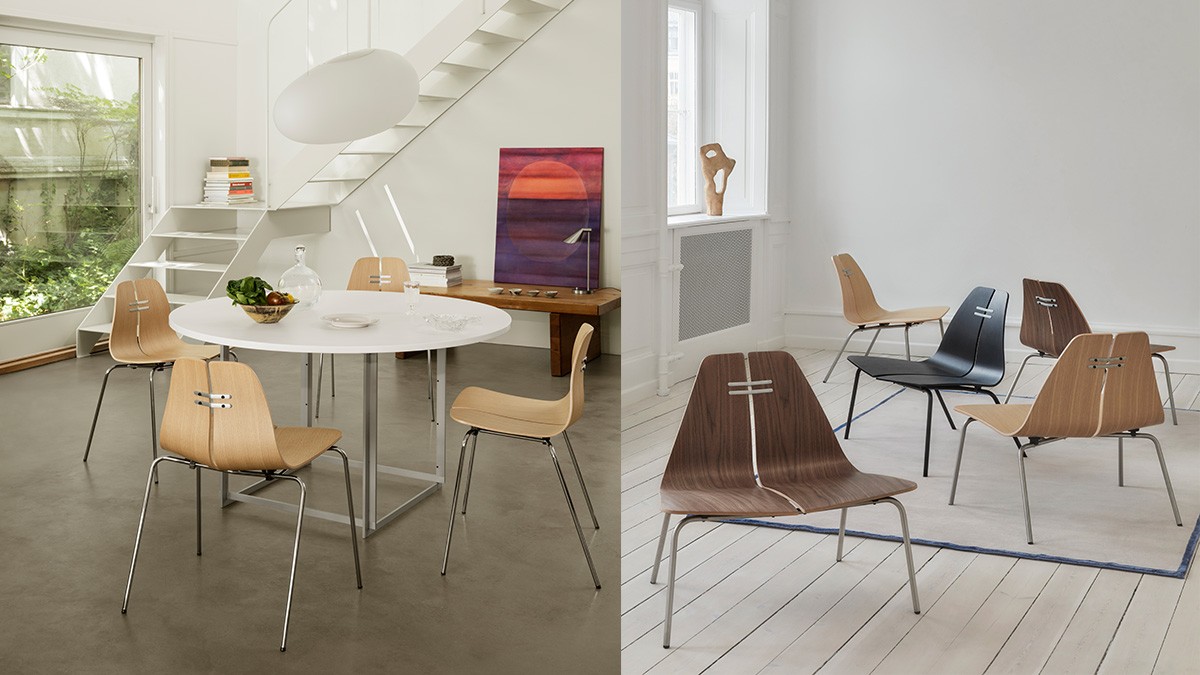
For the living room or dining table: the PK23 (left) and the PK 3 (right). Photos: Fritz Hansen
Moulded wood revival: a mid-century classic is back
Moulded wood - i.e., the deformation of wood through heat and pressure - was an absolute style-defining element of mid-century design. A true classic in this genre is, for example, the Series 7 by the manufacturer Fritz Hansen.
This year, the manufacturer is bringing a forgotten design out of the drawer: although the PK 23 and PK 3 chairs were conceived by Danish designer Poul Kjærholm for a company headquarters as early as 1954, his designs were ultimately never realised. It was not until 2006 that Fritz Hansen produced a prototype of the PK23 for an exhibition at the Louisiana Museum of Modern Art. This year sees the market-ready version of the PK23 and PK3 - which fits in well with current design trends without appearing too retro: The two chair models are reminiscent of butterfly wings, each consisting of two axially symmetrical moulded wood parts. The trick: the two separate seat shells are held together by a double metal connection. While the PK23 was designed as a lounge chair, the PK3 is intended as a classic stacking chair for the dining table. Available in three different versions (black lacquered ash, clear lacquered oak and clear lacquered walnut), they are amazingly versatile.
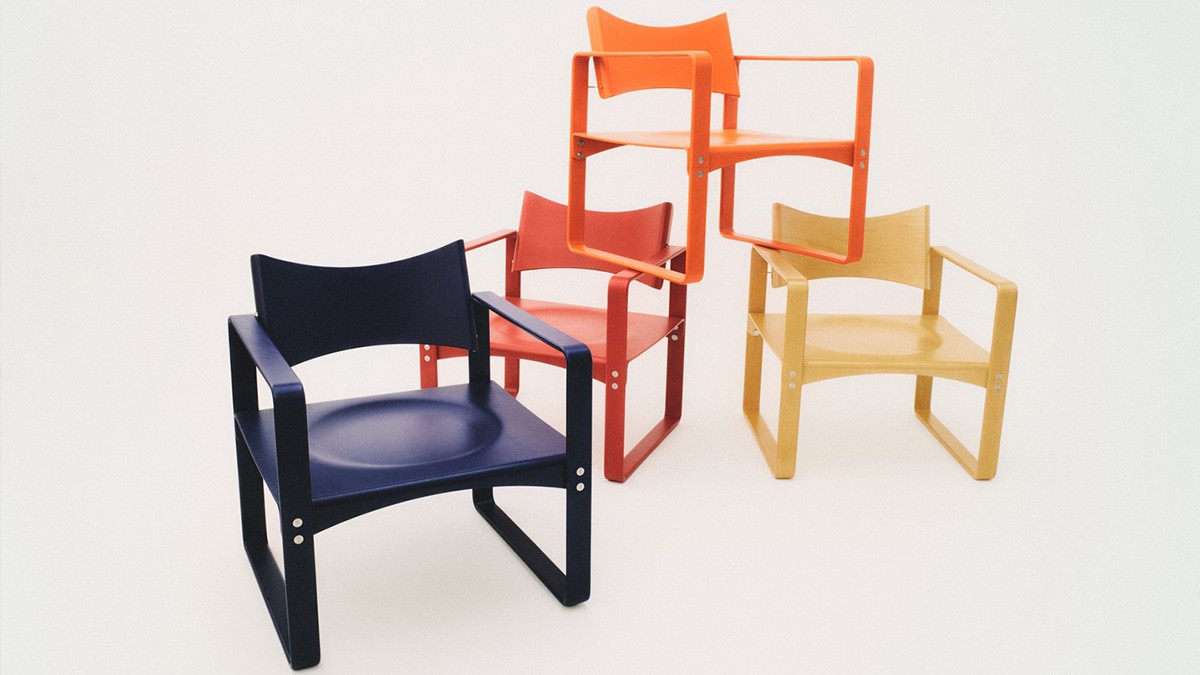
The 270 F series is colourful. Photo: Verpan
Sixties, but make it contemporary
This year, the manufacturer Verpan is revisiting the work of a master of curves with the reissued, armchair-like chair from the 270 F series: The special seating furniture was originally designed in 1965/66 by Danish designer Verner Panton for the Thonet brothers. Driven by the enduring desire for a design language that quotes elements of the 1960s and 1970s, this retrospective trick can be described as quite clever. Made from certified, moulded birch plywood, the armchair fits perfectly into today's understanding of contemporary interior design. It has a certain conceptual stringency and rigour, but thanks to the deliberately sparing use of curves, it is by no means undercooled. Verpan does not shy away from statement colours in this re-release and offers the series in vibrant red, blue, yellow and - in homage to the sixties - orange.
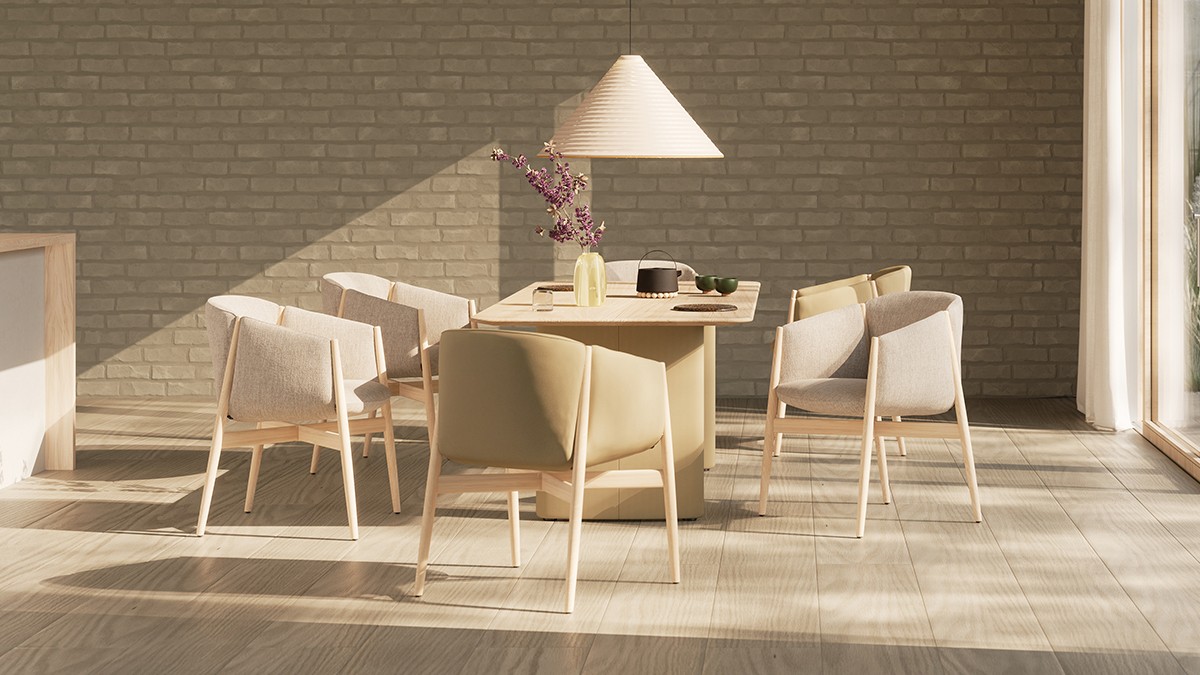
Reduced use of materials meets maximum design. Photos: COR
Sophisticated details
German manufacturer COR launched its new ‘Kagu’ dining chair at the beginning of this year. The design by Stuttgart-based studio Jehs + Laub is characterised above all by its fine details. Although wood forms the proverbial load-bearing foundation of the design, it is reduced to the absolute minimum here: Tapered round timbers, simply and almost invisibly mortised, and glued, give the impression that the lavishly upholstered seat shell seems to float above the frame. A sophisticated design that is available in either ash or oak wood.
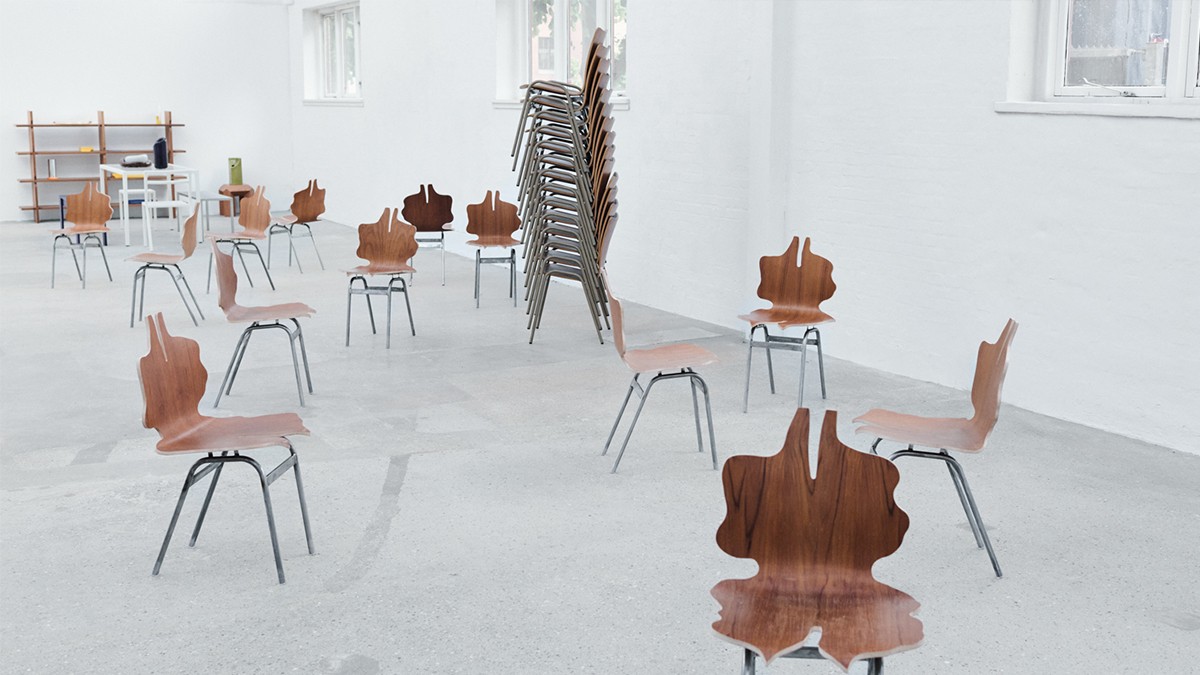
Wood as a carrier of memory in an expressive design by Niko June. Photo: Niko June
Between past and present: elegant upcycling
With ‘Sommerfugl’, the Copenhagen-based design studio Niko June presents an homage to movement. The series is based on discarded school chairs that have been carefully transformed. Each piece remains unique: scratches, signs of use and minor blemishes are preserved. Instead of staging perfection, ‘Sommerfugl’ understands design as a play with memory, material and movement - a poetic flap of wings between past and present.
As an experimental concept, the project is to be understood less as a series product and more as a living collection of sculptures - an exercise in appreciation, change and manual labour. ‘Sommerfugl’ thus joins a long history of curves that have become form: from Thonet's steam-bent bentwood chairs to the modernism of the post-war period and today's woodwork. The form here is not merely ergonomic, but narrative. It bears traces, tells stories and shows how design can react to the past. Here, wood is not just a means to an end, but remains a carrier of emotion and memory.
Whether sculptural, minimalist, or expressive - the current wooden furniture trends impressively demonstrate how versatile the material can be interpreted in design. If you want to see for yourself: Thonet, COR and many other exciting brands can also be experienced live at idd cologne 2025.

